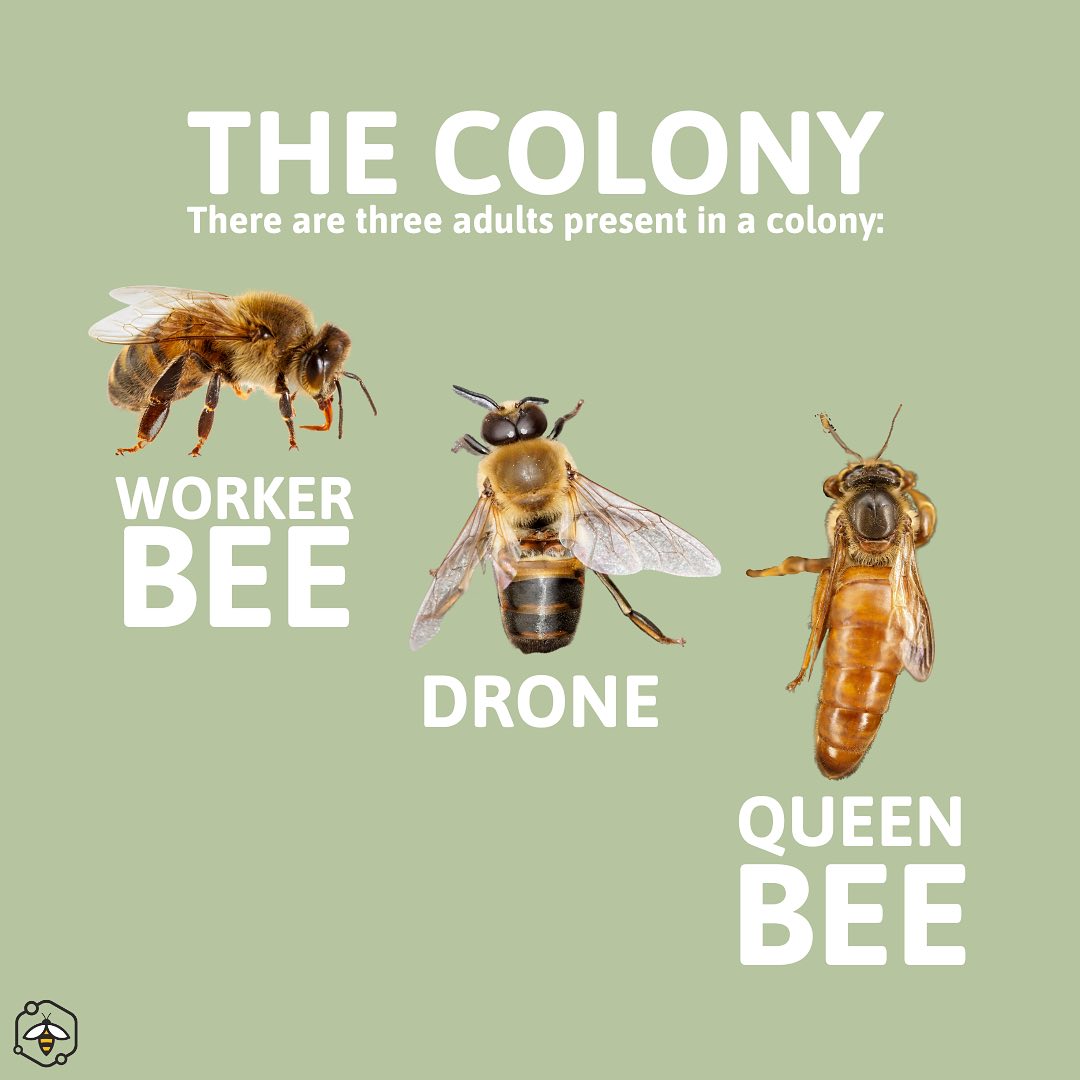
All About Honey Bees
As pollinators, bees play a part in every aspect of the ecosystem. They support the growth of trees, flowers, and other plants, which serve as food and shelter for creatures large and small. Bees contribute to complex, interconnected ecosystems that allow a diverse number of different species to co-exist.
Inside the Hive
Honey bees are social insects and live in colonies or hives, a collection of hives in one area is called an apiary. There are 3 kinds of bees in a hive, the workers, the drones, and the queen. The queen and worker bees are female, the drones are male.
Drone Bees
A drone is a male bee. Unlike the female worker bee, a drone has no stinger. He does not gather nectar or pollen and cannot feed without assistance from worker bees. His only role is to mate with a maiden queen in nuptial flight.
In areas with severe winters, all drones are driven out of the hive in the autumn. A colony begins to rear drones in spring. The life expectancy of a drone is about 90 days. Drone bees are larger than workers but smaller than the queen.
All bees, when they sense the hive’s temperature deviating from proper limits, either generate heat by shivering, or exhaust heat by moving air with their wings.
Worker Bees
Worker bees are female bees that carry out the majority of tasks needed for the functioning of the hive. At different ages they gradually move through different jobs.
When they’re 1-2 days old they start as the housekeepers of the hive, cleaning cells and warming the bee bread.
Days 3-5 they become nurses and nannies, feeding older larvae honey and pollen.
Days 6-11 they feed the younger larvae with royal jelly.
Days 11-17 they act as hive builders, making wax, building out honeycomb and ripening the honey
Days 18-21 They guard the entrance and vent the hive.
Days 22-35 they become foragers. Foragers fly out and gather pollen, nectar, propolis and water and bring it back to the hive.
Workers bees can sting you but only once, they die when they sting but normally live about 6 weeks in summer and 3-5 months in winter.
The Queen and her Retinue
The Queen is the largest of the 3 types of bees in the colony, when she’s developing she is fed royal jelly. When she is fully grown she must go on one or more mating flights and mate with several drones from a different hive. Once she’s mated she can lay up to 1500 eggs a day. She chooses whether she is going to lay a drone (male) bee or worker (female) bee based on the needs of the colony and the size of the cell she is laying in. She is surrounded by a “Retinue”, these are young worker bees that circle her and care for her and pick up the queen’s pheromones to spread to other bees throughout the hive.
Did you know that beekeepers paint their Queens? It helps them find her quickly but also tells how old she is. If the year ends in 1 or 6 she gets a white dot on her back, 2 or 7 her dot is yellow, 3 or 8 her dot is red, 4 or 9 her dot is green, and 5 or 0 her dot is blue.












